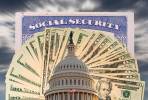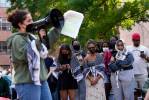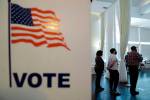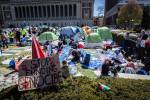Where will all the money go?
The Clark County School District made two huge mistakes in pursuit of a massive new school construction, improvement and maintenance campaign.
School Board trustees partially remedied one Wednesday. And if they don't force school district staff to fix the other, it will be next to impossible to win voter support for the issue come November.
The district claims to have $5.3 billion in critical capital needs over the next decade. Administrators want to completely replace several schools; build several new ones to alleviate crowded campuses; make major renovations and additions at other schools; repair heating, cooling, plumbing and electrical systems at dozens of schools; and purchase lots of new equipment and computers.
But in this era of figure fatigue, when taxpayers are constantly bombarded with numbers in the billions and trillions of dollars, it's easy to look past just how much money $5.3 billion really is.
It's enough to build a duplicate of the Mendenhall Center - the spectacular new UNLV basketball practice facility outside the Thomas & Mack Center - at every single public elementary, middle and high school in Clark County. It's enough to buy every student a new Honda Civic.
It's so much money GSA employees would be hard-pressed to come up with a way to spend it all in just 10 years.
In other words, it's too much money to ask for in a state with the country's highest unemployment rate and a school district with no enrollment growth. That was the district's first mistake.
So trustees changed gears Wednesday. Instead of seeking a $5.3 billion bond, the district will ask voters to authorize a six-year property tax increase that should cover nearly $700 million worth of projects, pay-as-you-go style. No borrowing. No debt. The district likely would ask voters to reauthorize that tax increase - about $72 per year for a $100,000 home - in 2018.
That's a much saner approach. The school district does indeed have some serious capital needs.
Which brings us to blunder No. 2: The school district won't tell the public exactly where all the money will go.
It wants to replace Boulder City High School and complete major improvements at West Prep Academy. Beyond that, the school district intends to replace two elementary schools and build two new ones. It's planning renovations at 19 other schools, including new gyms at four campuses, plus $124 million worth of repairs and equipment purchases.
But school district Chief Financial Officer Jeff Weiler wouldn't reveal to trustees which elementary schools would be replaced, which 19 schools would get overhauls and where the two new elementary schools would be located. Worse, he said officials may not disclose the information before November's vote.
Ballot question slogan: Just give us the money, and we'll take it from there.
If the school district has prioritized lists of construction and maintenance projects, it can't lawfully keep them secret. They're public records.
Besides, the school district has to sell voters on the need for new revenue. Taxpayers will want to know precisely what the new money will buy so they can decide for themselves whether the spending is appropriate. The press will want to inspect the campuses in line for replacement and renovation, as well as the crowded schools that would get relief from the construction of new ones, and relay that information to the public. Can the campuses that did not make the cut for replacement or renovation make a case that they should be at the front of the line?
And if the school district doesn't have prioritized lists of construction and maintenance projects, well, it's guilty of asking for a blank check. That's not the way any government budgeting process should work. That's spending for the sake of spending.
So why won't the school district's administration cough up the list? I asked Associate Superintendent Joyce Haldeman. She said she doesn't want to burden the students and parents at those campuses with the idea that their schools are unsafe, overcrowded dumps. They can't handle the truth, so voters must be kept in the dark about which schools will get their tax dollars? I've heard a lot of arguments against transparency, but the prospect of hurt feelings might be the worst.
Politics is at play here, too, of course. School district officials - and some trustees, I'm sure - clearly are concerned that voters in suburban areas that have newer schools won't vote to raise taxes on themselves if that money largely flows into the older campuses in the valley's urban core. No doubt, there will be pressure to spread the money into as many neighborhoods as possible to appeal to as many voters as possible.
But that's all the more reason why we should know right now which schools need to be razed and rebuilt, which need improvements and where new schools would go up. We're still talking about $700 million here, money that's supposed to be spent on urgent needs. It can't be turned into a pot of pork that's handed out like congressional earmarks.
You can't have accountability without transparency. And if the School Board doesn't want transparency, then trustees are transparently unfit for office. This is what we elect officials for. They're supposed to be stewards of our resources. They're supposed to provide oversight and answer to us.
They want our approval to raise taxes? Then show us the lists.
Glenn Cook (gcook@reviewjournal.com) is a Review-Journal editorial writer.























